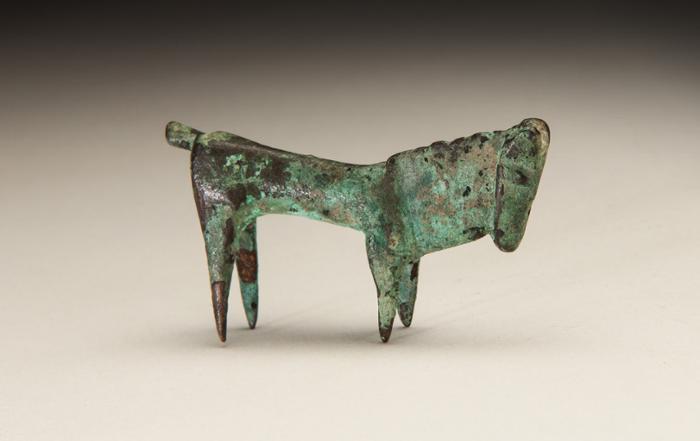
Among the nearly 3,000 art and artifacts in the Union College Permanent Collection are roughly 100 ancient cast bronze objects presumably from ancient Iran that were donated to Union in 1969 by Professor Emeritus of Biology Carl George and his wife, the late Gail George, who taught dance at Union. The Georges, who traveled widely, acquired their pieces in the 1960s in Tehran.
The collection is on display at the Schaffer Library Lally Reading Room until March 25.
There will be an accompanying curator’s talk and reception Tuesday, Jan. 30, 12:55 p.m. – 1:45 p.m. The event is free and open to the public.
“Lost Art: Ancient Iranian Bronzes in the Union College Permanent Collection” features assorted weaponry and horse fittings presumed to be from the Luristan region of Iran, with some dating to the Iranian Iron Age, or roughly 1300-650 B.C.E.
“The famed but ill-fated Luristan bronzes have intrigued and confounded museum curators, scholars, and archaeologists since the 1920s, when they began to show up in the European and American art markets,” said Sarah Mottalini, curatorial assistant of Art Collections and Exhibitions, who put together the show.
Luristan bronzes derived from an unusually rich metalworking industry that began in the area as early as the 4th millennium BCE. Archeologists and historians believe that their creators were most likely partially nomadic horse-breeding tribesmen from the Lur region in the remote and mountainous region of northwestern Iran.
While the bronzes in Union’s collection came without a documented provenance or excavation record, this isn’t unusual, Mottalini said.
“It’s a complication we share with presumed Luristan artifacts at some of the best institutions in the world, including the British Museum, the Metropolitan Museum of Art and Harvard University.”
She explained that once Luristan bronze artifacts began drawing impressive prices at urban bazaars, the local Lur tribesmen engaged in extensive clandestine digging in their ancient burial grounds. The practice is believed to have begun before 1930. It reached its height in the 1960s and 1970s, resulting in many thousands of objects entering the market, with only a small number from controlled excavations.
Among Union’s Luristan bronze holdings are many of the typical Lur weapon types, including a mace, a plain halberd, tanged daggers, swords and spearheads, as well as two examples of the later 2nd millennium BCE innovation of single cast, flanged daggers.
Union holds several Luristan-style pins, as well as one decorated with the grotesque head of the human bull character that figured so prominently in the Luristan canon.
“Our collection also includes several of the rather peculiar pendant types for which Luristan is known, including a stamp seal and several miniature bells and possible model vessels. In terms of horse fittings, Union has a good sampling, including a double-twisted snaffle bit, a pair of gently curved cheek-pieces, various bridle ornaments and bells, and even a striking quadruped figurine,” Mottalini said.
Mottalini spent months researching and cataloguing the individual pieces in the Union collection, which tells a part of the tale of ancient Luristan, “even if the culture that created them has been obscured by time.”